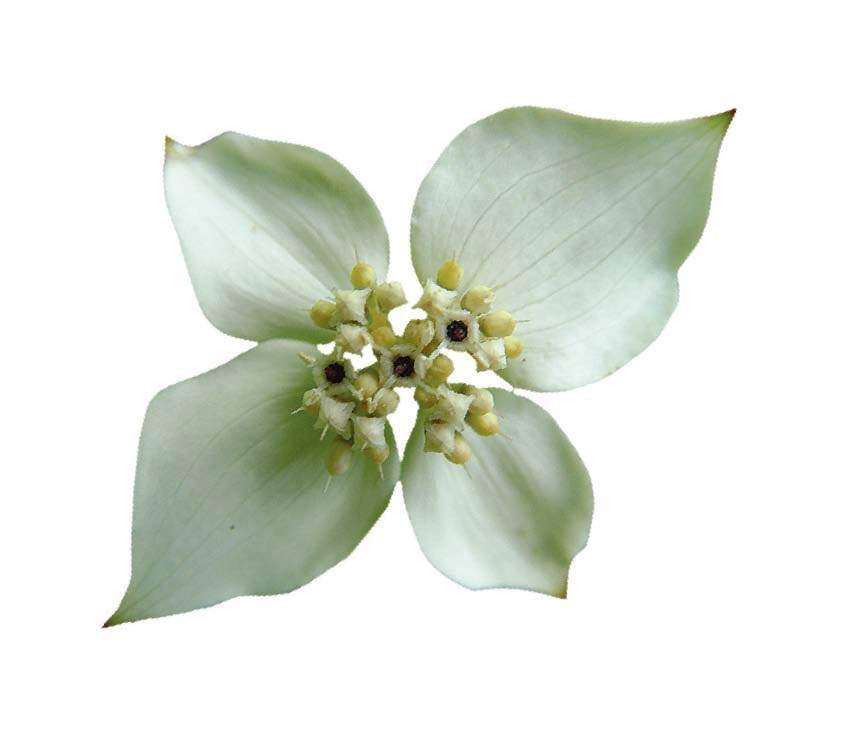Spring’s grace and beauty will soon be everywhere – cue the Stravinsky. Courting songbirds will rule the air, wetlands will resonate with love-mad croaking, and on the forest floor, bunchberry flowers will be exploding with the velocity of a rifle shot.
Bunchberry (Cornus Canadensis) grows from coast to coast in the Northern U.S. and Canada and south as far as Virginia in the mountains. Only a few inches high, the plant is far and away the smallest member of the dogwood family and, like its relatives, the four showy parts of the flower are not petals but rather modified leaves called sepals. The true flowers, grouped in the middle of the showy part, are tiny, relatively insignificant things that nevertheless contain an ingenious pollen distribution mechanism.
When the flowers are ready to open, the four petals stick to each other at their tips. If a heavy-enough insect lands on a flower, the petals fly apart, releasing the stamens, which fly upward with explosive force. The pollen-bearing anthers on the ends of the stamens catapult pollen at record-breaking speed, blasting the insect visitor, and sending some grains off into the wind. A very highspeed video (up to 10,000 frames/second) made by researchers at Williams College reveals this mechanism to be the fastest movement by a plant ever recorded. The flower opens in less than 0.5 milliseconds and shoots pollen an inch high, ten times the height of the flower.
You might wonder: What’s the hurry? The answer lies in the fact that insects are sometimes more interested in eating pollen than spreading it. Many gobble up the nutrient-rich pollen instead of taking it to the next flower they visit. Hence the need for an exploding flower that blasts and coats the insect’s entire body, thus ensuring that it’s more likely to transfer a grain or two of pollen to the sticky stigma of the next bunchberry that it visits.
It takes a relatively large insect to trigger the device. This increases the chance of cross-pollination, for large insects move quickly between plants, while smaller creatures may just mess around on the same group of flowers. In case the right size of visitor never comes, the flowers eventually burst open on their own so that the expelled pollen can try reaching its destination on the wind.



